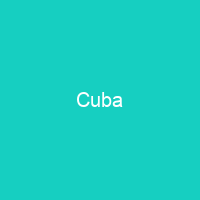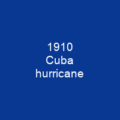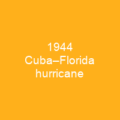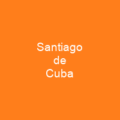Cuba

Cuba is located in the northern Caribbean where the Caribbean Sea, Gulf of Mexico and Atlantic Ocean meet. Havana is the largest city and capital; other major cities include Santiago de Cuba and Camagüey. Cuba is the second-most populous country in the Caribbean after Haiti, with over 11 million inhabitants. It is a Marxist–Leninist socialist state, where the role of the vanguard Communist Party is enshrined in the Constitution.
About Cuba in brief
 Cuba is located in the northern Caribbean where the Caribbean Sea, Gulf of Mexico and Atlantic Ocean meet. Havana is the largest city and capital; other major cities include Santiago de Cuba and Camagüey. Cuba is the second-most populous country in the Caribbean after Haiti, with over 11 million inhabitants. The country was a point of contention during the Cold War between the Soviet Union and the United States, and a nuclear war nearly broke out during the Cuban Missile Crisis of 1962. It is a Marxist–Leninist socialist state, where the role of the vanguard Communist Party is enshrined in the Constitution. It has one of the world’s only planned economies, and its economy is dominated by the tourism industry and the exports of skilled labor, sugar, tobacco, and coffee. According to the Human Development Index, Cuba has high human development and is ranked the eighth highest in North America, though 72nd in the world in 2019. Cuba boasts the lowest malnutrition death rate in Latin America as a result of the Cuban government’s food programme and according to the World Food Programme. The exact meaning of the name is unclear but it may be translated as either ‘where fertile land is abundant’ or ‘great place’ Fringe writers believe that Christopher Columbus named Cuba for the town of Beja in the district of Cuba in the state that was named by the Portuguese. Historians believe the name comes from the Taíno language, however the exact derivation is unknown. Cuba was a colony of Spain until the Spanish–American War of 1898, when Cuba was occupied by the U.S.
Cuba is located in the northern Caribbean where the Caribbean Sea, Gulf of Mexico and Atlantic Ocean meet. Havana is the largest city and capital; other major cities include Santiago de Cuba and Camagüey. Cuba is the second-most populous country in the Caribbean after Haiti, with over 11 million inhabitants. The country was a point of contention during the Cold War between the Soviet Union and the United States, and a nuclear war nearly broke out during the Cuban Missile Crisis of 1962. It is a Marxist–Leninist socialist state, where the role of the vanguard Communist Party is enshrined in the Constitution. It has one of the world’s only planned economies, and its economy is dominated by the tourism industry and the exports of skilled labor, sugar, tobacco, and coffee. According to the Human Development Index, Cuba has high human development and is ranked the eighth highest in North America, though 72nd in the world in 2019. Cuba boasts the lowest malnutrition death rate in Latin America as a result of the Cuban government’s food programme and according to the World Food Programme. The exact meaning of the name is unclear but it may be translated as either ‘where fertile land is abundant’ or ‘great place’ Fringe writers believe that Christopher Columbus named Cuba for the town of Beja in the district of Cuba in the state that was named by the Portuguese. Historians believe the name comes from the Taíno language, however the exact derivation is unknown. Cuba was a colony of Spain until the Spanish–American War of 1898, when Cuba was occupied by the U.S.
and gained nominal independence as a de factocode: la United States protectorate in 1902. As a fragile republic, in 1940 Cuba attempted to strengthen its democratic system, but mounting political radicalization and social strife culminated in a coup and subsequent dictatorship under Fulgencio Batista in 1952. Under Castro, Cuba was involved in a broad range of military and humanitarian activities in Guinea-Bissau, Syria, Angola, Algeria, South Yemen, North Vietnam, Laos, Zaire, Iraq, Libya, Zanzibar, Ghana, Equatorial Guinea, Eritrea, Somalia, Ethiopia, Congo-Brazzaville, Sierra Leone, Cape Verde, Nigeria, Benin, Cameroon, Zimbabwe and Mozambique. Cuba sent more than 400,000 of its citizens to fight in Angola and defeated South Africa’s armed forces in conventional warfare involving tanks, planes, and artillery. Cuban intervention in Angola contributed to the downfall of the apartheid regime in South Africa. Cuba is considered part of Latin America and is a multiethnic country whose people, culture and customs derive from diverse origins, including theTaíno Ciboney peoples, the long period of Spanish colonialism, the introduction of African slaves and a close relationship with the Soviet Soviet Union in the cold War. The official area of the Republic of Cuba is 109,884 km2 . The main island of Cuba, Cuba is the largest island in Cuba and in the Caribbean, with an area of 104,556 km2.
You want to know more about Cuba?
This page is based on the article Cuba published in Wikipedia (as of Jan. 12, 2021) and was automatically summarized using artificial intelligence.












